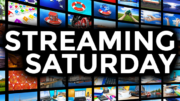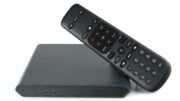It could still happen. Back in 2013 I worried that streaming would get so big, so fast, that it would kill traditional broadcasting and then everyone would depend on the internet, which wouldn’t be able to handle the strain.
That’s a less likely scenario nine years later as cable and telephone companies have aggressively upgraded their networks. Today it’s possible to get 200mbps speed to the home at a very reasonable rate (especially for the first two years) and there’s a lot more network capacity so that you don’t have to worry as much about things slowing down because the neighbors are having a streaming party.
Why this could still happen
I still worry about the future of broadcasting, because I think that right now the over-the-air world is paralyzed. It’s not clear what direction that technology will really go. Thanks to confusing guidance from the government, we now exist in a sort of “will-they-or-won’t-they” world with regard to the next generation of television broadcasting.
The ATSC, which is an independent committee which proposes TV standards in this country, has published their version 3.0 standard. It’s being tested all over the country. But there’s no government mandate, no time frame, and no program to help people upgrade. You might remember all the hoopla from 15 years ago when the US made the transition to digital television. It was very well publicized and funded. Today, there’s none of that.
TV makers are allowed to optionally include ATSC 3.0 tuners, as long as they also include an ATSC 1.0 tuner for normal over-the-air reception. A few high-end TVs have them, most don’t. Until the Congress mandates an official transition, there’s not likely to be much movement. What’s worse is that the transition could just spell the end to TV broadcasting.
The new nightmare scenario
If Congress mandates a change to ATSC 3.0 without funding a converter box program like they did last time, it’s likely to cause people to abandon over-the-air TV altogether. People choose antenna TV because it’s the least expensive way to get TV. If they have to buy a new TV to keep getting reception, they’re just as likely to move to streaming. After all, very few of us don’t have internet in the home at this point.
This could end up driving local broadcasters out of business and that’s a very bad thing. Local news and weather is really critical, and while that function could move to the internet… well let’s say that the internet isn’t known for journalistic integrity.
Still, this world of ours continues to amaze us, so anything is possible. Let’s hope this “nightmare scenario” isn’t a nightmare at all. Let’s hope it’s a gateway to a whole new world of TV broadcasting that’s better than ever, right?





